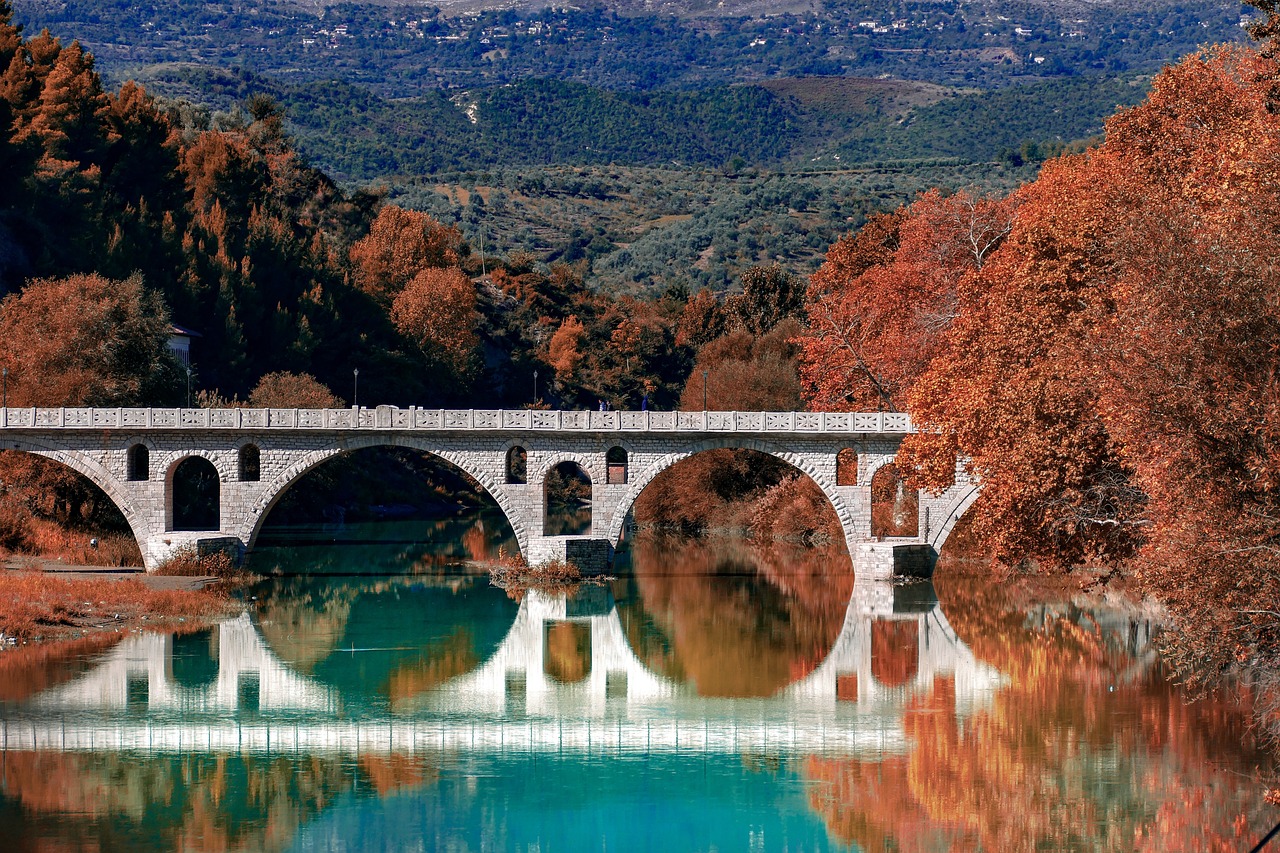Albania is a small, mountainous country located in Southeastern Europe on the Balkan Peninsula. It is bordered by Montenegro to the northwest, Kosovo to the northeast, North Macedonia to the east, and Greece to the south. The country has a coastline along the Adriatic Sea to the west and the Ionian Sea to the southwest.
Major Geographical Features
- Mountains: Albania is predominantly mountainous, with about 70% of its terrain being mountainous or hilly. The Albanian Alps in the north are part of the Dinaric Alps and include the highest peak, Mount Korab, which stands at 2,764 meters (9,068 feet).
- Rivers and Lakes: Major rivers include the Drin, Vjosë, and Shkumbin. Important lakes include Lake Shkodra (shared with Montenegro), Lake Ohrid (shared with North Macedonia), and Lake Prespa (shared with North Macedonia and Greece).
- Coastline: Albania has a diverse coastline featuring sandy beaches, rocky shores, and numerous lagoons and wetlands. The coastline is approximately 476 kilometers (296 miles) long.
Climate
Albania’s climate varies from a Mediterranean climate along the coast, with hot, dry summers and mild, wet winters, to a continental climate in the mountainous interior, with cold winters and hot summers. This variation supports diverse ecosystems and agricultural activities.
Natural Resources
Albania is rich in natural resources, which play a significant role in its economy. Key natural resources include:
Minerals
- Chromite: Albania has significant chromite reserves and is one of the largest producers of this mineral in Europe.
- Copper and Nickel: The country also has deposits of copper and nickel, which are mined and exported.
- Oil and Gas: Albania has onshore and offshore oil and natural gas reserves. The Patos-Marinza oil field is one of the largest onshore oil fields in Europe.
Agriculture
Agriculture is a vital part of Albania’s economy, benefiting from the country’s varied climate and fertile soils. Major agricultural products include:
- Olives and Olive Oil: Albania produces high-quality olives and olive oil, mainly in the coastal and southern regions.
- Fruits and Vegetables: The country grows a variety of fruits and vegetables, including citrus fruits, grapes, apples, and tomatoes.
- Livestock: Livestock farming, particularly sheep and goats, is common in the mountainous areas.
Forests
Forests cover about 28% of Albania’s land area. These forests provide timber, fuelwood, and non-timber forest products, such as medicinal plants and mushrooms. Sustainable forest management is crucial for maintaining biodiversity and preventing deforestation.
Water Resources
Albania is endowed with abundant water resources, including numerous rivers, lakes, and natural springs. These water resources are essential for hydroelectric power generation, agriculture, and drinking water supply. Hydropower is a significant source of energy in Albania, with several major hydropower plants located on the Drin River.
Albania’s geography and natural resources are integral to its economy and culture, providing a foundation for agriculture, mining, energy production, and tourism. The country’s diverse landscapes and rich natural heritage make it a unique and valuable part of the Balkan region.
References
- Albania – Geography: https://www.britannica.com/place/Albania
- Geography of Albania – World Atlas: https://www.worldatlas.com/geography/albania
- Climate of Albania – Climates to Travel: https://www.climatestotravel.com/climate/albania
- Natural Resources of Albania – Nations Encyclopedia: https://www.nationsencyclopedia.com/economies/Europe/Albania-NATURAL-RESOURCES.html
- Hydropower in Albania – International Hydropower Association: https://www.hydropower.org/country-profiles/albania
- Agriculture in Albania – Food and Agriculture Organization: http://www.fao.org/albania/fao-in-albania/albania-at-a-glance/en/


